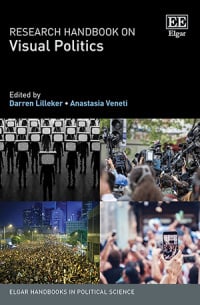
We are happy to share that the Research Handbook on Visual Politics co-edited by Darren Lilleker and Anastasia Veneti is out now with 31 chapters by several experts in the field.
The Research Handbook on Visual Politics focuses on key theories and methodologies for better understanding visual political communication. It also concentrates on the depictions of power within politics, taking a historical and longitudinal approach to the topic of placing visuals within a wider framework of political understanding.
Among others, we are happy to highlight the contribution by Roberta Bracciale and Antonio Martella entitled “Leaders’ visual communication styles: between personalisation and populism”

Abstract
The study analyses the visual communication styles performed by the main Italian leaders on Instagram during the first year of Covid-19 pandemic. Through the analysis of both textual and visual elements we have identified six visual communication styles and their adoption by leaders according to their degree of populism. Drawing upon the framework of ‘actor connectivity’ (Ekman & Widholm, 2014, 2017), we identified which subjects are depicted by political leaders to understand the main differences between populist and non-populist politicians. Our results show that leaders visual strategies polarise between government parties and bold populists. Moreover, bold populist leaders’ visual communication does not rely on the depiction of people, but it appeared more focused on negative campaigning against the élites and ostracising the ‘dangerous others’. Other leaders mainly used Instagram to represent their professional activities ranging from public engaged to information broadcasters, together with ordinary citizens or several categories of elites.
Keywords: visual communication style, Instagram, political leaders, populism, personalisation, HCPC

